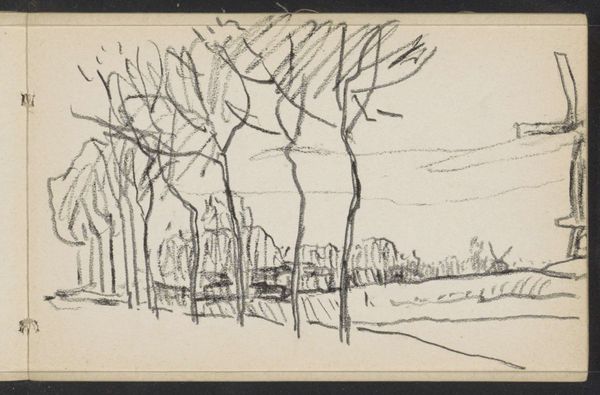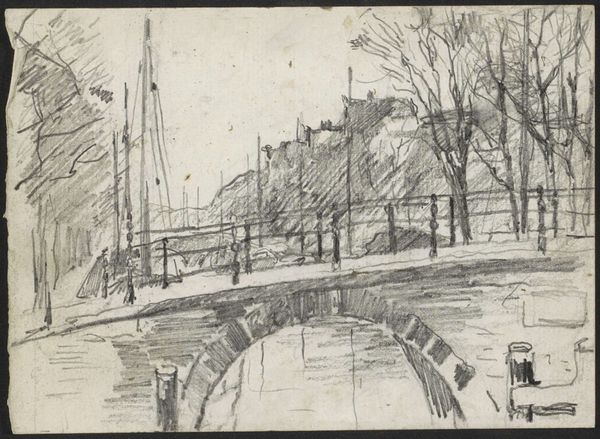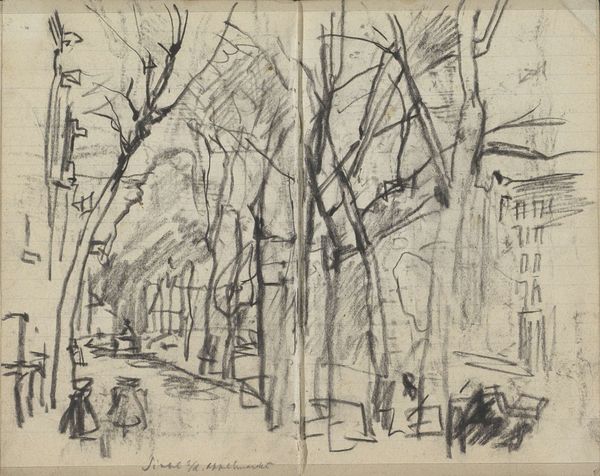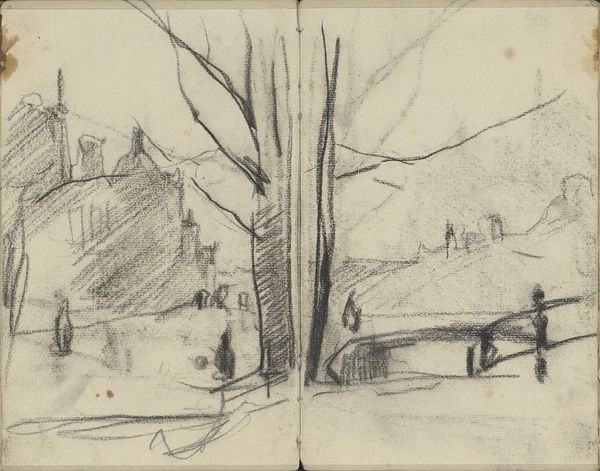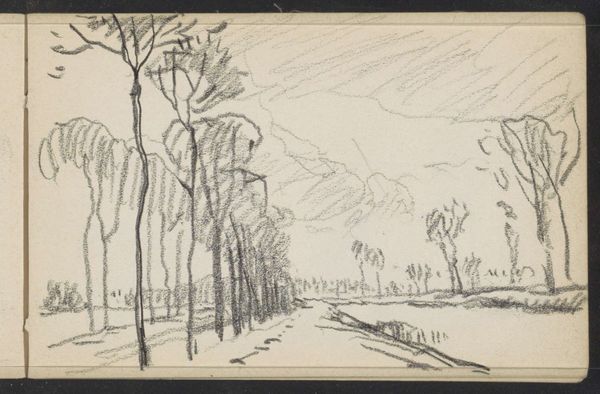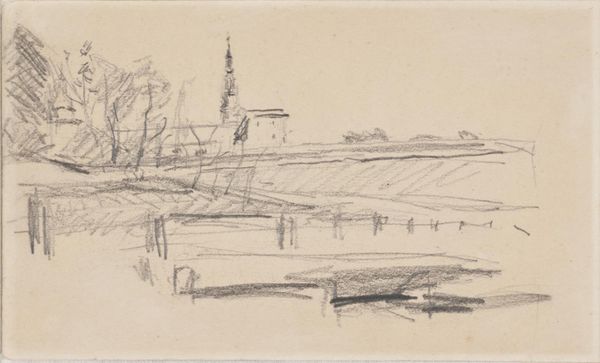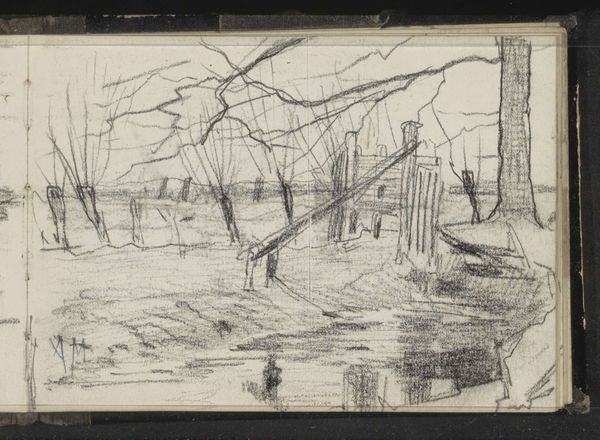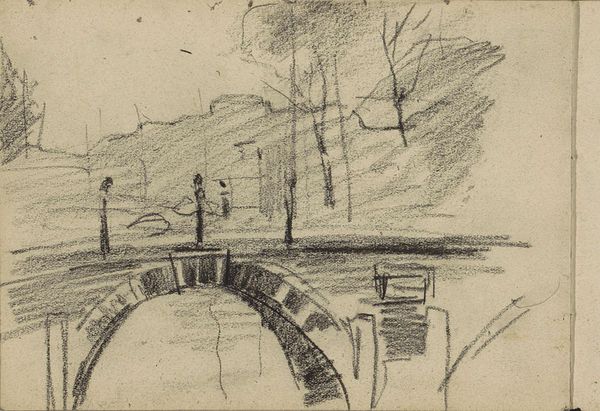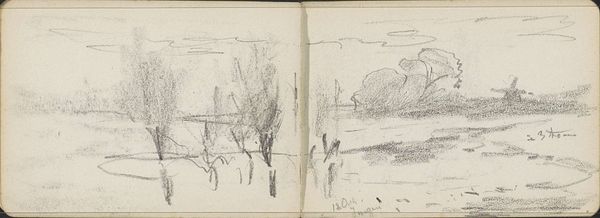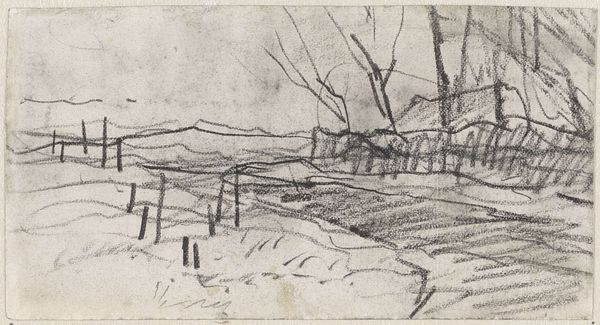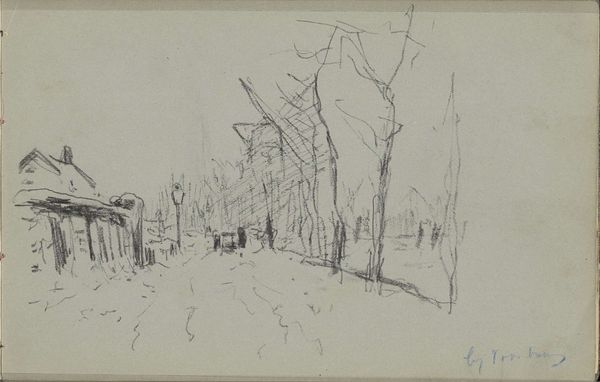
Dimensions: height 136 mm, width 194 mm
Copyright: Rijks Museum: Open Domain
Curator: Willem Witsen's "Gezicht op een kade in Amsterdam," created between 1870 and 1923 and now housed in the Rijksmuseum, presents us with a striking waterside view rendered in ink on paper. Editor: There’s an immediate feeling of melancholy; the muted tones and spare lines evoke a quiet stillness, like a scene observed through a mist. Curator: That's a fitting impression. Witsen masterfully uses line to convey a sense of place, not just the Amsterdam quayside itself, but perhaps a collective memory of its character over time, given the span in the work's dating. Editor: The composition is fascinating. See how the verticality of the bare trees punctuates the long horizontal line of the quay, almost fragmenting the pictorial space into separate emotional registers. There is that interesting break, too, along the waterside edge. Curator: Notice how the use of ink drawings allows for an economy of detail that throws a stronger light on certain symbols? The lone figures walking beside the canal evoke themes of human connection to landscape but also detachment or even isolation, given their solitude. And think about what the scene must have represented in an ever-changing city; continuity in place becomes increasingly precious, tinged with the memory of earlier ways of life. Editor: Agreed. And I can't help but feel there's an artful juxtaposition at work here between the apparent spontaneity of the lines and the carefully constructed spatial arrangement. It invites the viewer to actively decode and find connections, rather than passively observe. Curator: A perceptive interpretation. Ultimately, Witsen provides a portal – almost an archetypal representation of place itself - that encourages contemplation of identity in relation to both urban development and personal histories. Editor: Absolutely, I walk away from this viewing seeing a very powerful and sensitive encapsulation of time's passage.
Comments
No comments
Be the first to comment and join the conversation on the ultimate creative platform.
